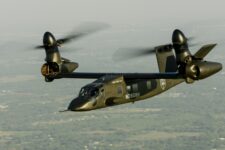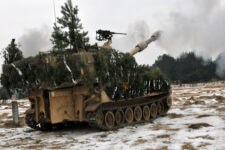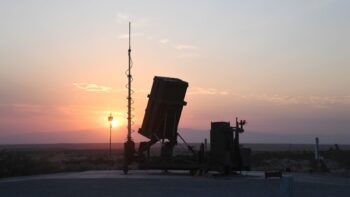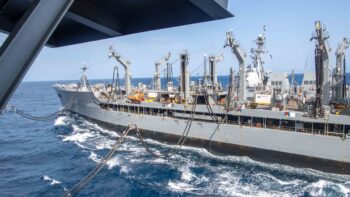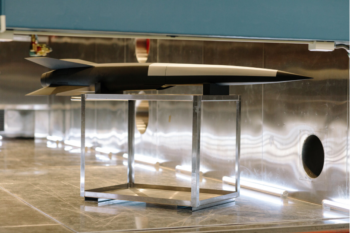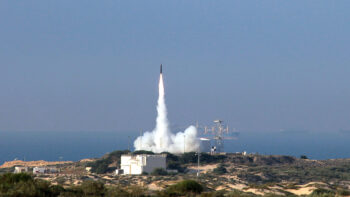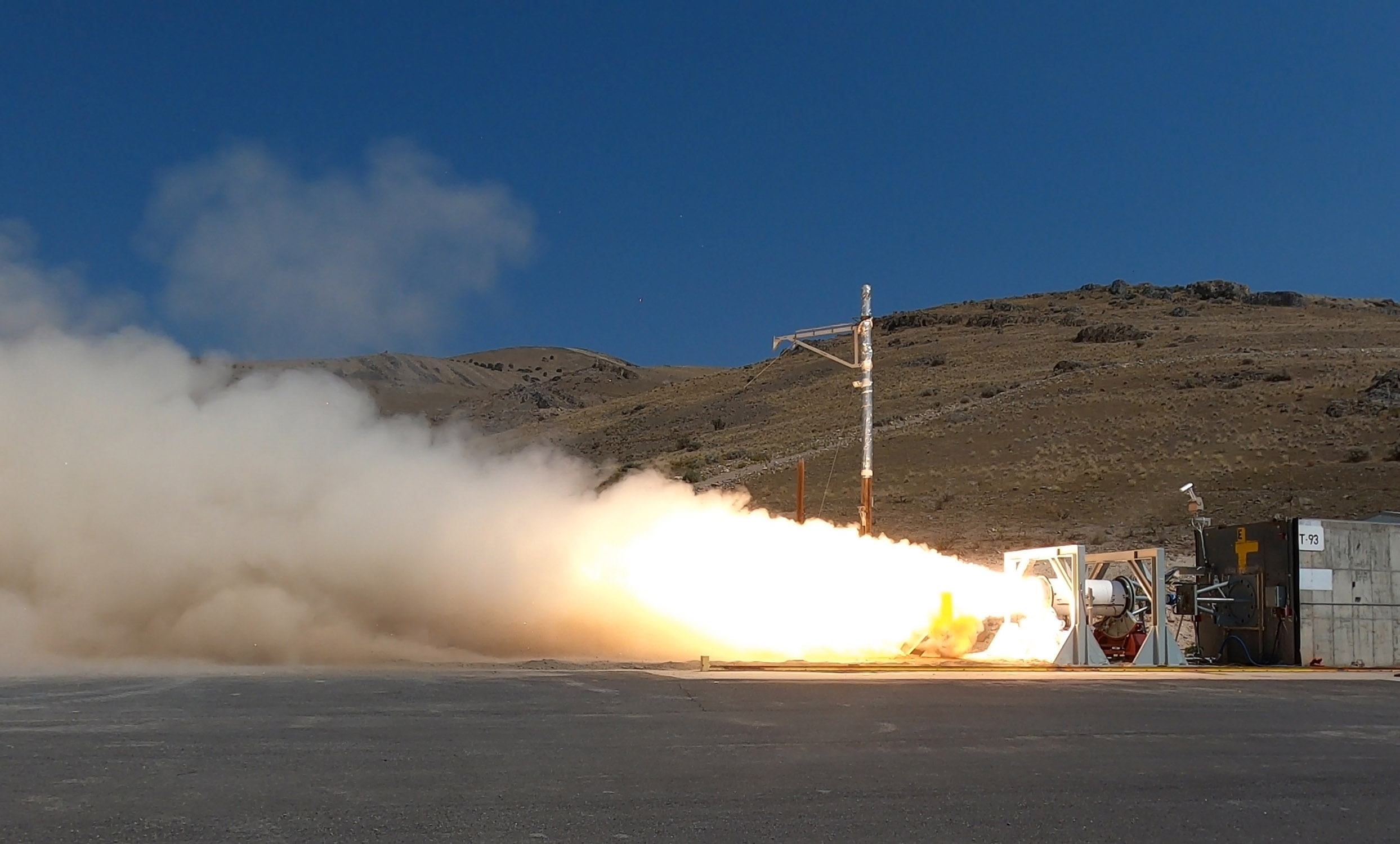
The Navy on Aug. 25 successfully tested the second stage solid rocket motor destined for the Conventional Prompt Strike program and the Army’s Long Range Hypersonic Weapon in Promonotory, Utah. (U.S. Navy photo)
WASHINGTON: The Navy on Thursday announced it had successfully tested the second stage solid rocket motor for its premiere hypersonic weapon program, a “critical milestone” on the way to the fielding a common missile for both the Navy and Army, according to a service statement.
The test took place on Wednesday in Promontory, Utah, as part of development for the Navy’s Conventional Prompt Strike program and the Army’s Long Range Hypersonic Weapon; it was coordinated by the Navy’s Strategic Systems Programs office. A previous test took place in May.
“This test marked the successful testing of both stages of the newly developed missile booster, as well as a thrust vector control system on the SRM [solid rocket motor],” the Navy said in a statement. “These tests are a vital step in the development of a Navy-designed common hypersonic missile that will be fielded by both the Navy and Army.”
The motor is part of a new missile booster being incorporated into the Pentagon’s efforts to create a common hypersonic missile. Both the Navy and Army will take the common weapon and adapt it to be launched from sea or land. Another critical element to the program, the Common Hypersonic Glide Body, was successfully tested in March 2020. The Navy has the lead on designing CHGB while the Army will take point on its production.
The Air Force was previously participating in CHGB up until February 2020, when budget pressures forced it to choose between funding a program intent on leveraging the new glide body – the Hypersonic Conventional Strike Weapon – or a separate effort.
The Pentagon, through the Conventional Prompt Strike program, has been eyeing development of a hypersonic weapon — a missile capable of flying at speeds of Mach 5 and giving commanders the ability to strike targets globally in a matter of minutes — since the early 2000s.
But advances by Russia and China in recent years have spurred new momentum for the military to accelerate its efforts on creating a common glide vehicle, with Pentagon brass predicting the weapons would be fielded in the mid-2020s. Advances by adversaries have also spurred interest from the Pentagon on how to defeat such a weapon if it is used against the United States.
Despite CPS being around for two decades, it was only last year that the Office of the Secretary of Defense handed off responsibility for its acquisition to the Navy.
In addition to CPS and the Army’s LRHW program, the Air Force is looking to leverage work done by the Defense Advanced Research Projects Agency to create the AGM-183 Air-Launched Rapid Response Weapon, according to an Aug. 25 Congressional Research Service report. The service’s fiscal year 2022 budget request includes $161 million to procure 12 ARRW missiles. The ARRW program is the same effort the service chose to fund in lieu of weapon it planned to develop to use the CHGB.
Israel likely partner for Greece as it looks for integrated air defense systems
A pair of sources told Breaking Defense that Greece is in the fact-finding process of what systems Israeli might be willing to sell, as Athens looks for multi-layered air defense options.











